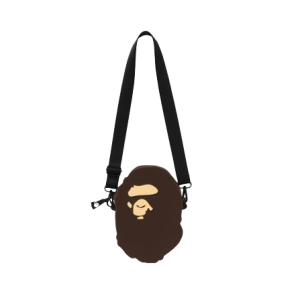The Role of a Concept Artist in World-Building
Creating imaginary worlds requires a concept artist to possess more than just artistic skills; it demands storytelling prowess, an understanding of composition, and a familiarity with design principles. A concept artist contributes by:
- Setting the Mood and Style: The initial sketches and artwork concept shape the project’s overall tone.
- Ensuring Visual Consistency: From props to characters to landscapes, everything must align within a cohesive visual framework.
- Creating Detailed Environments: By producing detailed concept art illustrations, artists help developers visualize unique and compelling spaces.
Concept artists blend imagination with real-world influences to ensure that each design feels authentic and lived-in, creating a foundation on which stories and characters thrive.
Key Techniques for Building Worlds with Concept Art
1. Research and Reference Gathering
World-building begins with gathering references, researching cultural and historical artifacts, and seeking inspiration from real-world sources. Concept artist often draw on elements from nature, architecture, and various cultures, creating a library of images and ideas that inform their work. This process is fundamental to creating believable designs, as it ensures each artwork concept resonates with elements familiar to the audience.
2. Sketching and Conceptualizing Ideas
In the early stages, sketches act as the blueprint for more detailed designs. Quick thumbnail sketches allow artists to experiment with ideas, layouts, and compositions. For instance, drawing rough shapes and silhouettes helps determine the size and scale of objects in a scene. These sketches lay the foundation for the more refined concept art illustrations that follow.
3. Establishing Color Palettes and Lighting
Colors and lighting are essential to evoking emotions in a piece. When designing for fantasy landscapes, futuristic cities, or dystopian settings, the choice of colors and lighting enhances the atmosphere and adds depth. A dark, muted palette can convey mystery or danger, while a bright and warm palette can create a sense of safety and comfort. Famous concept artists like Ralph McQuarrie used color masterfully to enhance the worlds of “Star Wars,” giving each environment a distinct mood.
4. Understanding Composition
Composition is the arrangement of elements within a scene to guide the viewer’s eye and create a visual hierarchy. By using techniques like the rule of thirds, leading lines, and framing, concept artist direct attention toward focal points within the artwork. Effective composition is essential for creating dynamic and engaging character animation designs, as it gives the scene depth and movement, enhancing the storytelling.
Tools Concept Artists Use to Build Worlds
Digital Software
In the modern age, digital tools have revolutionized the art world. Programs like Adobe Photoshop, Procreate, and Corel Painter allow concept artists to explore ideas, iterate quickly, and bring intricate details to life.
- Adobe Photoshop: Known for its versatility, Photoshop is ideal for detailed painting, compositing, and photo manipulation.
- Blender and ZBrush: For artists exploring three-dimensionality in their designs, tools like Blender and ZBrush allow the creation of 3D character creators and objects that can be explored from multiple angles.
- Clip Studio Paint: Popular among illustrators, Clip Studio Paint offers unique brushes and tools that simulate traditional painting techniques, making it excellent for concept art illustration.
Traditional Tools
Some concept artists also prefer traditional media like pencils, markers, and watercolors, especially for initial brainstorming. These media allow for a tactile approach to exploring ideas, and many artists enjoy the creative freedom of working on paper before translating their work digitally.
Steps in Creating Concept Art for World-Building
1. Brainstorming and Ideation
The first step is to brainstorm ideas based on the project brief. Concept artists typically collaborate with writers, directors, and designers to gain a thorough understanding of the project’s story, themes, and objectives. By doing so, they align their artwork concept with the intended vision.
2. Sketching Basic Layouts
After brainstorming, artists begin sketching rough layouts or thumbnails. This phase is crucial for exploring potential compositions, designs, and perspectives. It is a rapid process, allowing artists to visualize multiple interpretations of the same idea before settling on the strongest concepts.
3. Developing Detailed Artwork
Once a concept has been chosen, artists refine the sketch into a more detailed illustration. They may add color, shading, and intricate details, bringing the environment to life. This stage is where the artist’s skill in character animation design and landscape rendering comes into play, adding realism and believability to the scene.
4. Finalizing with Rendering and Detailing
The final stage involves adding textures, lighting, and other fine details to enhance realism. By focusing on small elements like shadows, reflections, and atmospheric effects, concept artists make environments appear as if they could exist in reality.
Famous Concept Artists and Their Contributions to World-Building
Famous concept artists have left their mark on the industry through iconic creations and visionary designs. Their work offers valuable lessons for aspiring concept artists:
- Ralph McQuarrie: Known for his work on “Star Wars,” McQuarrie’s designs established the franchise’s aesthetic and visual language, proving how concept art can define an entire universe.
- H. R. Giger: His unique and haunting style brought the “Alien” franchise to life, setting the standard for horror sci-fi environments.
Learning from these renowned artists provides insight into the diverse approaches to world-building and helps budding artists understand the impact of strong visual concepts.
How Concept Art Shapes Immersive Worlds
Concept art is more than visual appeal; it’s the blueprint for immersive storytelling. Through careful attention to detail, concept art illustration transcends simple drawings, becoming an extension of the narrative.
When viewers enter a movie or game world, the influence of concept art is felt everywhere, from the vast landscapes to the minute details on a character’s armor. Concept art achieves this immersion by:
- Creating Relatable Worlds: Drawing from real-world elements, artists ground fantastical worlds in reality, making them more relatable and believable.
- Enhancing Emotional Engagement: Through color and design, concept artists evoke emotions that align with the story’s tone.
Challenges and Rewards in World-Building Through Concept Art
World-building in concept art is a rewarding yet challenging process. Concept artists often work under tight deadlines, balancing creative freedom with the project’s vision. They must adapt quickly, often revising designs to accommodate feedback from directors and developers.
Conclusion
The question, How do concept artist build worlds with concept art?, reveals that it is a meticulous and creative process. From initial brainstorming and research to final rendering and detailing, concept artists merge storytelling with design to create unforgettable worlds. Their work, often influenced by the practices of famous concept artists, guides viewers into realms of adventure, mystery, and wonder.










